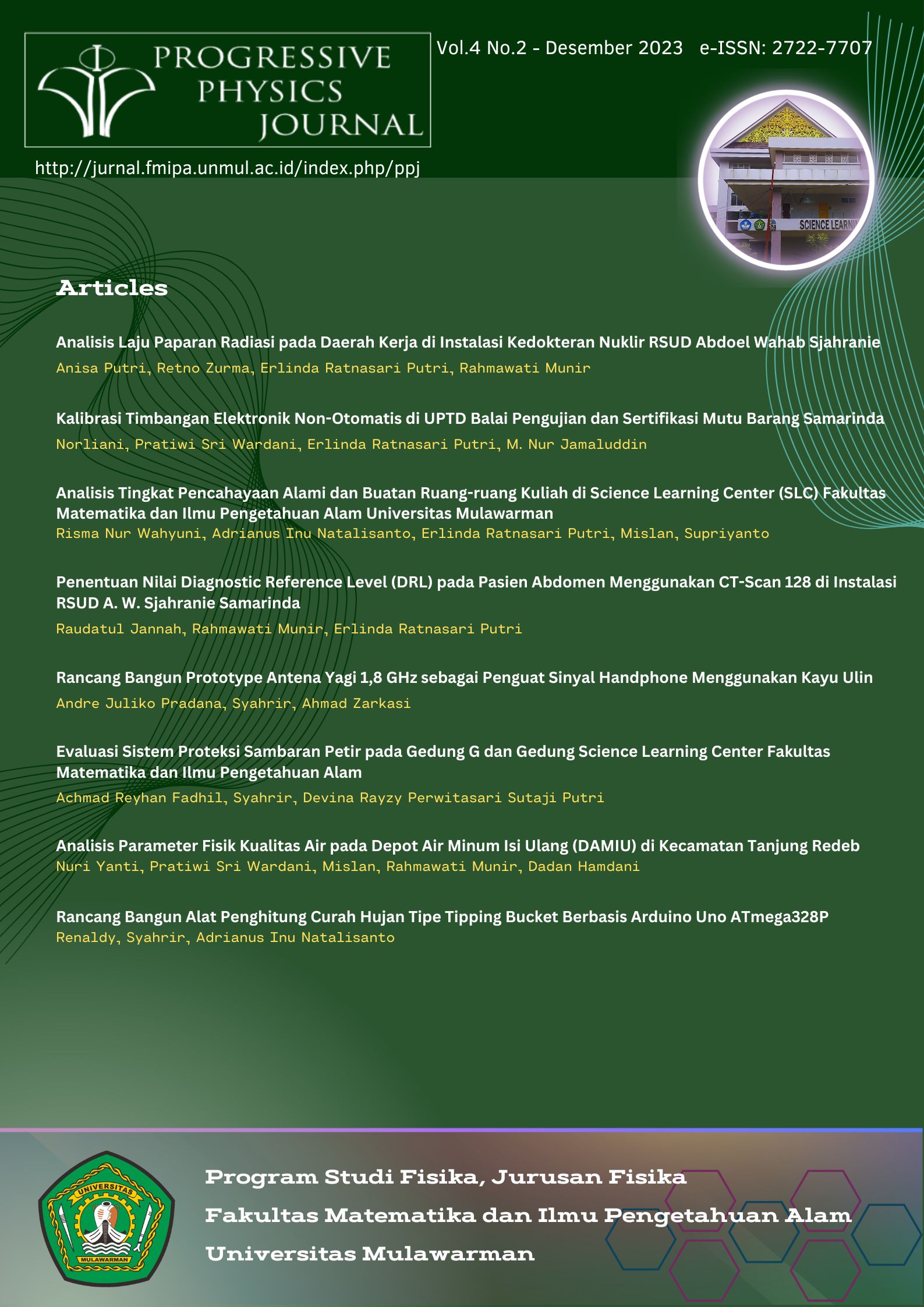Kalibrasi Timbangan Elektronik Non-Otomatis di UPTD Balai Pengujian dan Sertifikasi Mutu Barang Samarinda
DOI:
https://doi.org/10.30872/ppj.v4i2.1010Keywords:
Calibration, uncertainty, electronic scalesAbstract
Scales are one of the vital measuring tools that have long been used by humans in everyday life. In determining the measurement quality of the scales, calibration is needed to determine the value of uncertainty. In this regard, a study was conducted to determine the uncertainty of non-automatic electronic scales calibrated using the E2 class standard, and to determine the quality of the instrument from the measurement results by looking at the uncertainty of the calibration results of non-automatic electronic scales. The calculation of the calibration of the electronic scales includes the magnitude of the measurement repeatability, correction of scale readings, the effect of loading not in the middle of the pan, and the effect of hysteresis from the scale by using the direct comparison method to the mass of the reference standard, namely by using the mass standard from class E2. From the calibration of the electronic scales that have been carried out, the results of the correction uncertainty value are 0.0002 g and the maximum uncertainty value is 0.00027 g, while the combined uncertainty is obtained a value of 0.00032 g, which means that the non-automatic Electronic Analytical Balance meets the uncertainty. determined by the standard used. In addition, the non-automatic Electronic Analytical Balance scale is included in good condition with hysteresis test indications of no more than one resolution.







